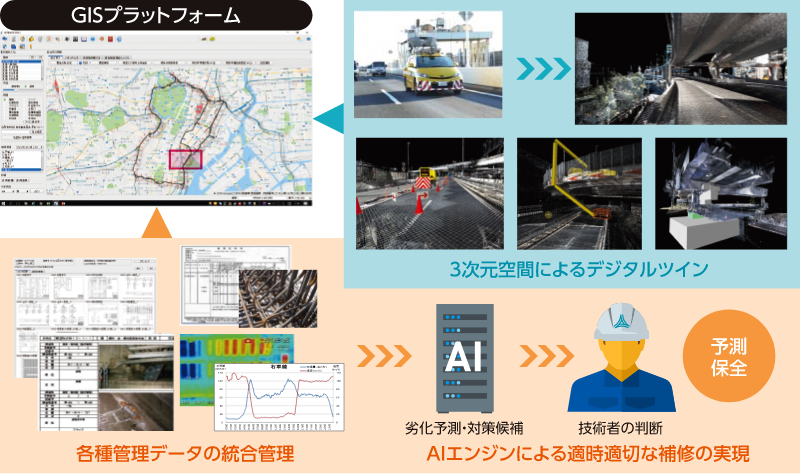
Basic policy2
Self-efforts as a social infrastructure company
We will reduce our own CO2 emissions by thoroughly saving energy in our road facilities,
introducing renewable energy to the greatest possible extent, and promoting the greening of our facilities.
Leading projects 3
Reducing the environmental impact of construction
and maintenance and management works

In the works contracting process, we will award points to bid participants for their track record on actions
to become carbon neutral and for technological proposals contributing to carbon neutrality.
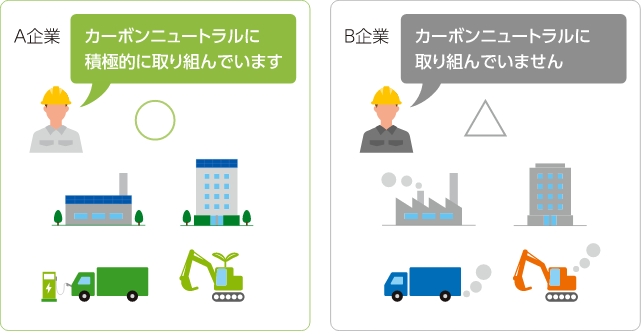
A track record of actions to become carbon neutral over the course of the works
undertaken will count toward the rating of the contractor’s performance evaluation.
We will pursue initiatives to reduce the environmental burden of construction work
by making effective use of by-products as recycled resources such as dirt and concrete rubble.

column
Example of effective utilization
- A part of excavated soil generated in tunnel construction work is reused.
- The steel outer shell of the shield machine used for tunnel construction is used for the tunnel body.
We will conduct technology consulting in Japan and around the world, using dedicated technologies developed and operated through maintenance of the Metropolitan Expressway.
We will prioritize the securing of detours in preparation for major renovation and repair works that require long-term road or lane closures by adding lanes, improving merger sections and other enhancements.
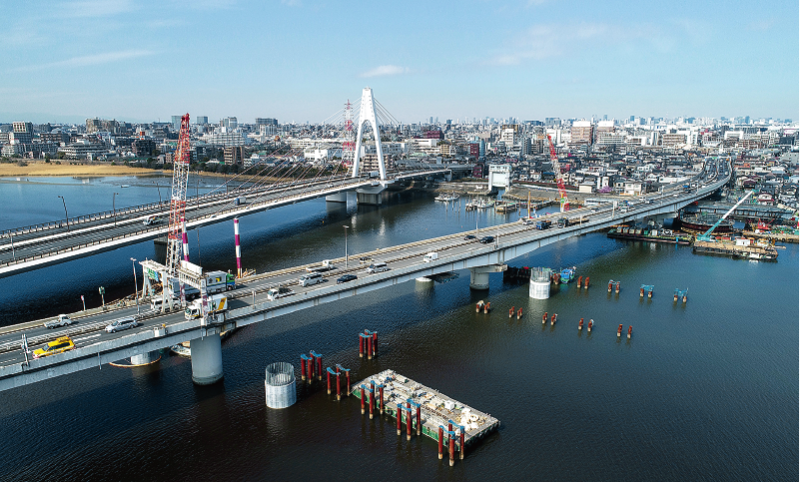
Leading projects 4
Saving energy to the greatest extent in business activities,
including road lighting initiatives

We will reduce electricity consumption by converted road lighting to LED.
Lighting of Elevated Parts
On the Harumi Line, which opened in February 2009, since installing the first white LED lighting for expressways as lighting for elevated parts, we are steadily improving the LED lighting. In the future, in addition to maintenance on new routes, we will promote the introduction of LED lighting on the existing routes in line with the time of renovation.
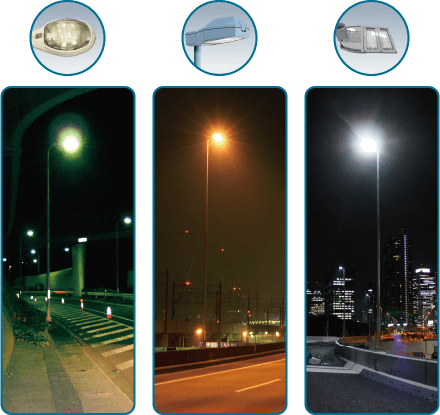
Lighting of tunnel section
Not only does it achieve low power consumption and long life as well as elevated lighting, but it also allows the lamp mounting interval to be expanded, a reduction in the number of equipment is realized, and further energy saving is achieved.
In addition to introducing LED lighting to the Yamate Tunnel (Bayshore Route -3 Shibuya Line) that opened in March 2015, existing tunnels such as the Aoyama tunnel, Kitanomaru tunnel, and Yaesu tunnel, in March 2020, we have also introduced LED lighting it to the Yokohama Northwest Tunnel.
In the future, we will continue to install LED lighting on existing routes such as the Haneda Tunnel at the time of renovation.
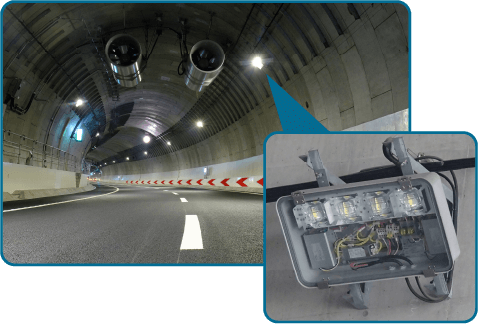
Adoption of LED lighting for PAs and other facilities

column
How much electricity can be saved?
LED lighting cuts power consumption by about 70%
(Reduction rate at Rainbow Bridge)

When procuring electricity for the Metropolitan Expressway, we will give priority to power from renewable sources.
○Convert to zero-emission power, such as ensuring that PAs are partly powered by renewable energy (Stage 1)
○Explore the possibility of converting Shutoko to zero-emissions sources for all of its electricity consumption (Stage 2)
Introduction of renewable energy
We have installed solar and wind power generation systems at parking areas and tunnel entrances. The generated electricity is used to support electric power for air conditioning in the tunnels, as well as for lighting in parking area facilities and restrooms. Going forward, we will continue to expand the introduction of renewable energy.
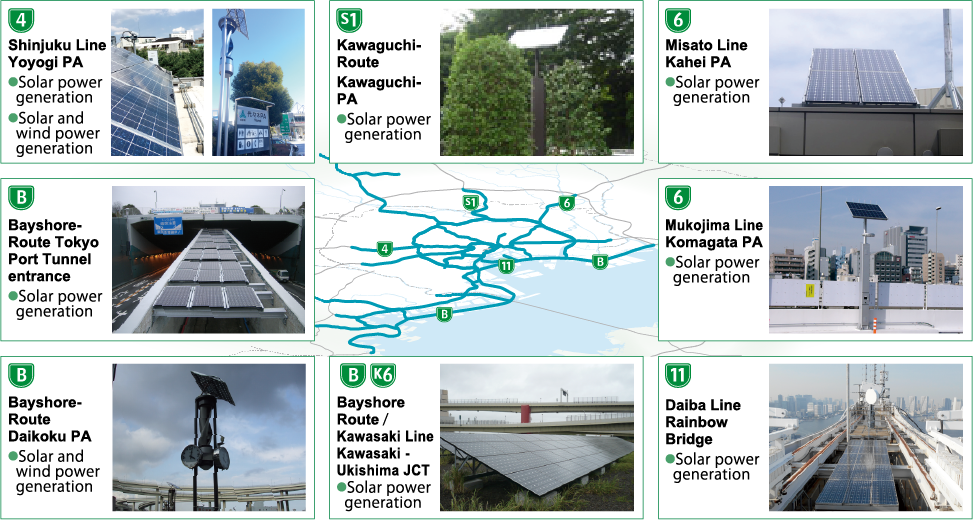
We will be looking at ways to reduce energy consumption by enhancing the efficiency of ventilation management, such as by changing the way ventilation equipment is operated.
Leading projects 5
Introduction of next-generation vehicles
for commercial use

EVs, PHVs and fuel cell versions (FCVs) for applicable models in the business fleet
will be transformed with next-generation vehicles.
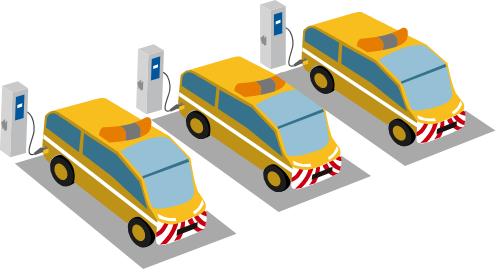
We will be proactively updating the fleet of road patrol cars, heavy vehicles and special vehicles too, based on upcoming technological innovations and new vehicle trends.
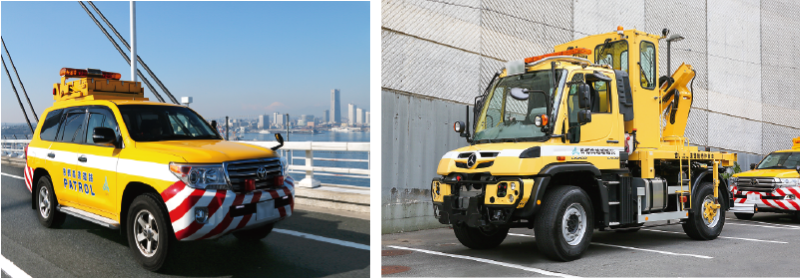
Leading projects 6
Reduction of CO2 and waste
from corporate activities

By going fully paperless for all internal documentation,
we will reduce paper use and reduce power used in printing.
We will reduce the volume of waste,
carbon emissions associated with waste and promote effective utilization of waste as a resource or energy source.
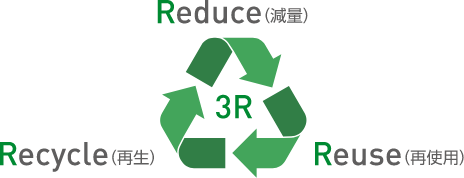
Promotion of CIRCULATION SHUTOKO project
Effective use of waste materials from Metropolitan Expressway as part of our environmentally friendly efforts.
We are working on a recycling project to reuse secondhand materials such as banners installed on Metropolitan Expressway for tote bags.
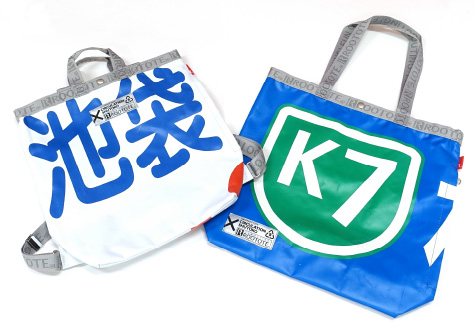
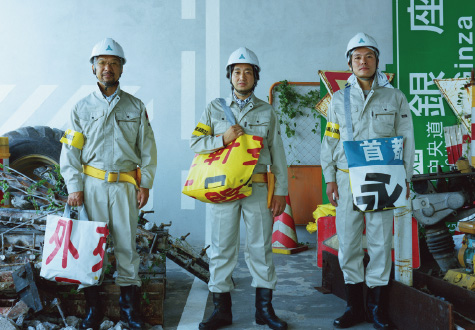
About CIRCULATION SHUTOKO(Metropolitan Expressway website)
Procurement of environmental goods
According to the Basic Policy on Promoting Green Procurement of the Act on Green Purchasing, we promote the procurement of environmental resources.
About Procurement of environmental goods(Metropolitan Expressway website)
We will aim to save power and boost productivity through further specific workstyle reform policies and measures.
We will aim for ZEB (zero-emission buildings) that consume net-zero primary energy across the year while achieving pleasant indoor environments.
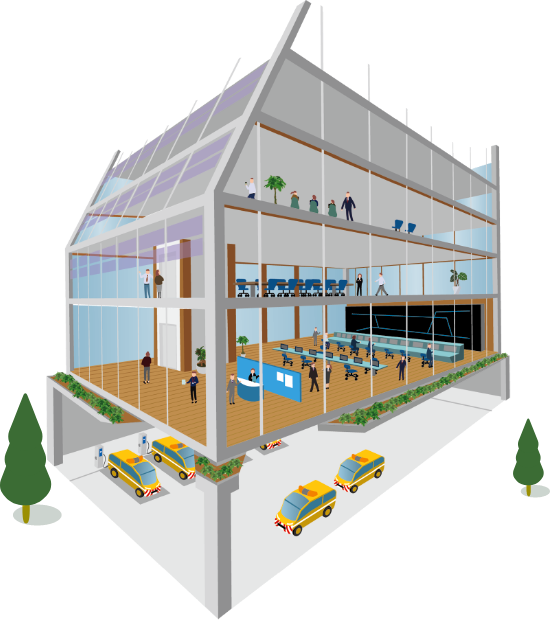
Leading projects 7
Introduction of DX strategies
for greater operational efficiency

We will study and process maintenance data accumulated for every type of structure using an AI engine,
develop technology to accurately assess ageing and progression of damage in the structures
and establish draft plan for efficient maintenance and repair.
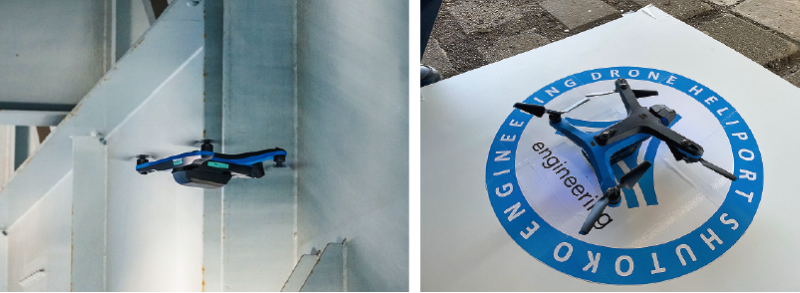
Using the new technologies such as InfraDoctor® (a system that applies GIS and 3D point cloud data to support maintenance),
we will seek further energy-efficiency in our inspections and on-site work.
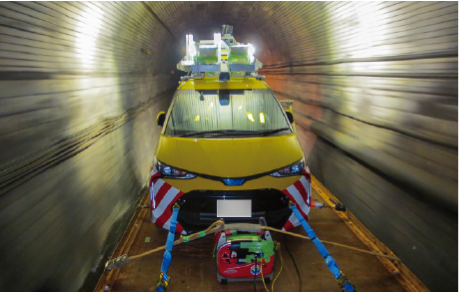
A smart infrastructure management system that delivers all-encompassing support for efficient infrastructure maintenance
We will pursue more efficient maintenance by rolling out i-DREAMs® across the company
and leveraging its cutting-edge digital technologies.
